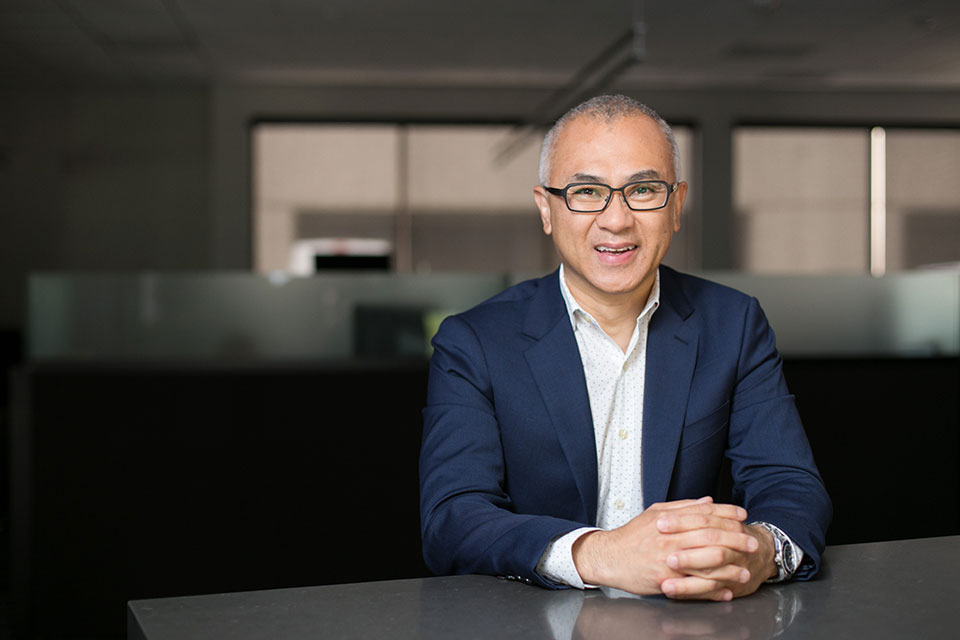Adding Value by Making Your Customers, Patients, and Staff Work for It

If you’re a product designer, the most exciting part of your job is seeing the finished product for the first time. It’s the culmination of months of research, thinking, meetings, tinkering, frustrations, and triumphs. It’s what makes the job worthwhile. So Doug Dietz, a designer at GE Healthcare, was understandably excited when he got to see the MRI machine he’d been working on installed in its first hospital.
It was the product of nearly two years’ work. Doug had been responsible for many aspects of the machine’s design, and he couldn’t wait to see his baby in action.
“I remember walking out,” he recalls. “I saw this young family coming down the hallway.” There was a mother and a father and a little girl of about seven. The girl was dressed in medical robes, ready for her scan.
“They’re coming towards me, and I can tell as they get closer the little girl is weeping.” As soon as the girl sees the room, she freezes. Doug leaned down behind her and caught a glimpse of the environment from her perspective.
Looking up, he saw a towering, ominous ring with a black chasm in the center. Next to this gaping hole hung a thick slab ready for the mechanical beast’s next sacrificial offering.
It was terrifying.
The little girl broke down sobbing as her parents looked at each other, not knowing how they would get their child through this.
At that moment, Doug realized he’d failed.
He’d focused on making the scanner simpler to use, more powerful, and with a clearer interface. That all made perfect sense from a rational business point of view. But none of that created a better experience for the patients, especially the most vulnerable ones.
The medical staff told him that this girl’s reaction wasn’t unusual. About 80% of kids had to be sedated before being put through the scanner. And that’s not just traumatic for the young patients. It affects their parents too. And makes the job more stressful and unpleasant for the hospital staff.
A Different Approach
So, Doug set off on a mission to change that. He wanted to create a positive experience for all the people who mattered most.
But this would require a different design approach to the one that had led to this product.
He started by generating some ideas with the most critical audience of all. He sat down with a group of kids at a local daycare center to explore how a hospital experience could be enjoyable. He got some pretty wacky ideas back – but he didn’t dismiss any. He continued his exploration with groups of kids at a local museum. And as a result, he collected some of the wildest ideas he’d ever seen in his working life.
The concepts captured in those crayon drawings led Doug down an entirely different path. One that involved adding extra steps rather than removing them.
He realized that he had to extend his thinking beyond merely designing the machine and its interface. If he wanted to create a better experience for the kids, he needed to address the environment surrounding the device, the people who operate it, and the communication journey from when the child first finds out they need to be scanned.
What he created was more like a theme park ride than a hospital appointment. And you certainly couldn’t describe it as frictionless.
It all starts with an invite. This isn’t a medical letter telling you that you’ve got an appointment to be put through a serious-sounding piece of medical equipment; it’s a ticket. It’s more akin to a message from Willie Wonka than a doctor. The child has been chosen for an exciting experience. This ticket shows that they’re special. Their appointment becomes something to look forward to rather than something to dread. The patient journey starts with a playful sense of fun, setting the tone for what’s to come.
When the child arrives for their appointment on the day, it’s nothing like a typical medical experience. The entire room is decorated like a theatre set. And the massive MRI scanner is the glorious centerpiece of it all. It no longer looks like a scary monolith; it now looks like part of a pirate ship, a space rocket, a submarine, or some other fantasy scenario. Everything is considered, right down to the scent in the room.
Instead of robes, the medical team are wearing costumes. They no longer work at a hospital but are now characters with roles to play and scripts to memorize. Terms such as “lay down” or “turn on the machine” are replaced with “buckle up” and “liftoff.” And then, as the countdown begins, the kids start imagining that the sounds of the machine are a rocket taking off or some other part of the story. What was previously scary had been turned into an exciting game.
The result is the polar opposite of the previous situation. Instead of 80% of the kids undergoing sedation, they only sedated two kids in the first couple of years. That’s way less than 1% of the patients.
Can We Come Back Tomorrow?
When Doug made a return visit to see his new design in action, it couldn’t have been more different from his first visit. He talked to the parents of a girl who had just had her scan, and the little patient kept pulling on her mom’s shirt with something to say.
Doug continues the tale. “She goes, ‘What is it honey?’ and the little girl looks up and she says, ‘Can we come back tomorrow?’”
This time it’s Doug who’s in tears. He’d created something that put a smile on the face of the patients, the parents, and the staff. He’d transformed a terrifying scenario into one of pure joy by adding more story, role-playing, and a lot of paint.
That kind of result would have seemed like a fantasy before.
The Lesson?
Much of humanity’s energy has been focused on minimizing effort and reducing friction. This has accelerated in recent years with a ruthless focus on creating frictionless experiences.
However, this approach of removing obstacles is steadily building a world with less and less emotional reward. And importantly for businesses, it’s leading to brands offering less meaning to their customers. Which makes it harder to build relationships with their audience and develop loyalty.
Friction requires effort. Effort creates meaning.
Friction isn’t something to be avoided. Instead, embracing a dose of good friction can lead to a healthy, happy, and more fulfilled life— in business and beyond.
Written by Soon Yu.
— Excerpted from Friction: Adding Value by Making People Work for It–
Have you read?
# Best CEOs In the World Of 2022.
# TOP Citizenship by Investment and Residency by Investment Programs, 2022.
# Global Passport Ranking, 2022.
# The World’s Richest People (Top 100 Billionaires, 2022).
# Best Novels to Read of 2021.
# Economy Rankings: Largest countries by GDP, 2022.
Bring the best of the CEOWORLD magazine's global journalism to audiences in the United States and around the world. - Add CEOWORLD magazine to your Google News feed.
Follow CEOWORLD magazine headlines on: Google News, LinkedIn, Twitter, and Facebook.
Copyright 2025 The CEOWORLD magazine. All rights reserved. This material (and any extract from it) must not be copied, redistributed or placed on any website, without CEOWORLD magazine' prior written consent. For media queries, please contact: info@ceoworld.biz









